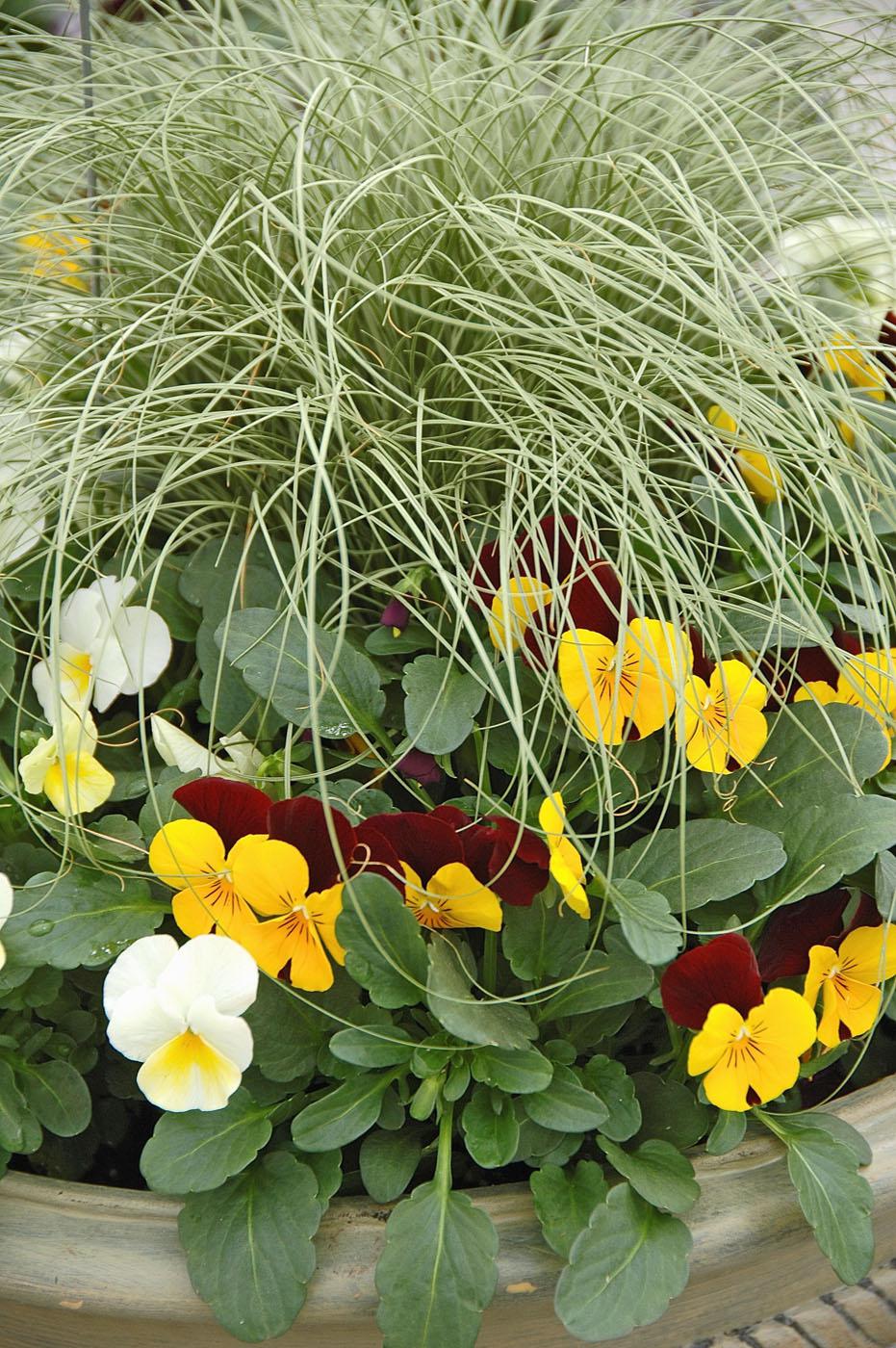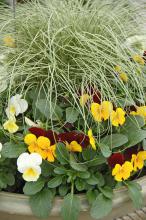Information Possibly Outdated
The information presented on this page was originally released on December 11, 2008. It may not be outdated, but please search our site for more current information. If you plan to quote or reference this information in a publication, please check with the Extension specialist or author before proceeding.
'Pennies' add big value to landscape aesthetics
By Norman Winter
MSU Horticulturist
Central Mississippi Research & Extension Center
A few Pennies can make your winter landscape look like a million bucks.
I'm not talking about the proverbial penny saved or even the penny found lying on the sidewalk. The Penny I am talking about is not copper-colored but perhaps a rich orange, deep blue or one of more than 20 other colors.
Penny is the name of one of the most popular viola series. It is long-blooming, persevering in the coldest winters, yet heat-tolerant and resistant to stretching once warm weather arrives in the spring.
You might think Penny gets its name from the size of its flowers. This is not the case from what I can tell in my garden. The flowers are much larger than a penny and are produced in abundance. If you think the Penny viola won't create the show that pansies do, then think again. They have so many flowers, the landscape literally comes alive.
Over the years I have been impressed with the citrus colors and the Citrus Mix, but now the blues, such as Azure Wing, Deep Marina and Deep Blue, have really caught my attention. I recently planted Penny Yellow and Penny Blue with Ideal Cherry dianthus and the Mississippi Medallion Award-winning Cardoon.
This time of year, most garden centers offer large 6- or 8-inch pots. These give a better landscape impact, and the plants have a larger root system, enabling them to handle cold fronts.
Choose a site with plenty of sun and work in some peat or humus to make your beds fertile and well drained. Rains have been coming to my house about every four or five days this season. Having a good, well-drained planting mix is crucial.
Combine your violas with taller flowers like Ideal, Bouquet Purple or Amazon dianthus. If you are planting Penny Deep Blue, try combining it with Citrona Orange erysimum. Snapdragons are also great partners. For foliage, consider Cardoon, Redbor kale or Red Giant mustard. Add a layer of mulch after planting, and your cool-season landscape will look good for months.
Penny violas also look great when these combinations are planted in large, cool-season mixed containers.
Violas and pansies like to be fed during the winter. Recent research has shown that water-soluble blends you either mix or attach to your water hose work better than granule applications that often rely on warm temperatures to release.
If your landscape looks a little like Siberia, then add some cool-season color. Shop for poinsettias for indoors and Penny violas for outdoors.




